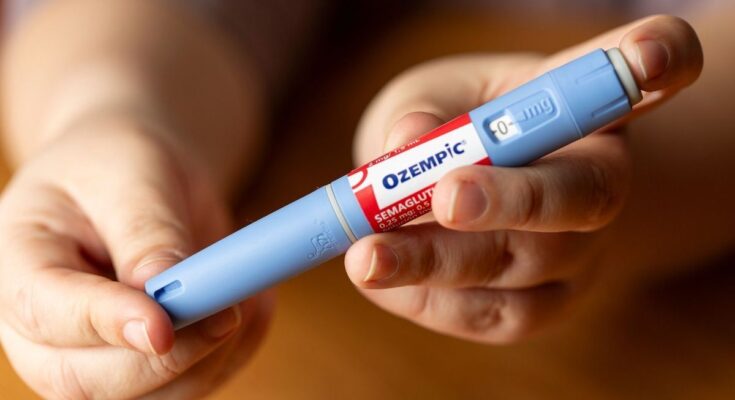While a new supply of Ozempic should occur soon, the Medicines Agency is changing its recommendations, which since December no longer allowed this drug to be prescribed to new patients. Find out the conditions to benefit from it.
While a new supply of Ozempic could occur in the coming months, the medicines agency is changing its prescription recommendations based on announcements from the Novo Nordisk laboratory.
Ozempic: exploding global demand
Popular on social networks beyond its medical indications, l’Ozempic – a medicine intended for patients suffering from Type 2 diabetes – is the effective “slimming solution” touted by hundreds of videos. But as a result, patients affected by diabetes encounter difficulties in finding this drug which the laboratory has difficulty producing in sufficient quantity.
In this context, the ANSM and Health Insurance have placed Ozempic under “reinforced surveillance” in Europe, by monitoring sales and reimbursement data from the national health data system (SNDS) and reports non-compliant use and reports of adverse effects to regional pharmacovigilance centers. Despite these measures, tensions are inevitable and it is the Novo Nordisk laboratory which informs the ANSM in March 2023.that in order to allow the continued production of Ozempic for the continuity of care of patients already treated, it suspends the supply of Ozempic 0.25 mg (initiation dose) in the city and in hospitals from the start December 2023 and at least until the end of the first quarter of 2024“. The laboratory limits the production of Victoza, the supply of which will be reduced in the city at least until the end of the 2nd quarter of 2024.
A gradual resumption of new patients on Ozempic
In December 2023, so that patients already treated can continue to receive their treatment, the Agency reviewed its prescription recommendations in consultation with the French-speaking Diabetes Society (SFD), the French Federation of Diabetics (FFD), the French Federation of nutrition (FFN), the College of General Medicine (CMG) and the pharmacists' unions (FSPF and USPO). They are quite simple: no Ozempic or Victoza for new patients, but only renewals for patients already treated.
On April 25, 2024, the agency reacted to information from Novo Nordisk, according to which “a progressive supply of Ozempic 0.25 mg (semaglutide) could occur in the coming months, allowing the anticipated needs to be partially covered. According to the laboratory, the provision of Ozempic 0.25 mg to meet needs would be possible from September 2024. On the other hand, according to Lilly, the strong supply tensions for Trulicity (dulaglutide) will continue beyond the end of the year. end of the year. An update on the situation for Europe is planned at the latest by the end of 2024“.
Taking into account this information and the therapeutic need, the committee dedicated to the use of GLP-1 analogues proposes a gradual resumption of treatment initiations with Ozempic or Victoza in certain situations, as soon as stocks are partially made available.
The new ANSM recommendations
These recommendations will come into force when boxes of Ozempic 0.25 mg and Victoza 6 mg are again effectively available in pharmacies, a priori in the coming months, subject to confirmation from the Novo Nordisk laboratory.
Which remains identical to the latest recommendations of December 2023
Initiation of treatment
Prescribing Trulicity will still not be possible in order to reserve this medication for patients already treated and not cause a break in treatment.
Renewal of treatment
When using Victoza, Ozempic, or Trulicity, the usual treatment is maintained.
What is changing compared to the December 2023 recommendations
Initiation of treatment
The prescription of aGLP-1 will be reserved for type 2 diabetic patients with proven atheromatous disease.that is to say with a history of vascular event (myocardial infarction, ischemic stroke, revascularization, amputation linked to ischemia, etc.), or a significant atheromatous lesion (stenosis of more than 50% on a coronary, carotid or lower limb artery; unstable angina/silent myocardial ischemia with damage documented by imaging or functional test; intermittent claudication with systolic pressure index less than 0.9).
For patients without a history of ischemic cardiovascular disease (primary prevention)the use of another class of antidiabetics will be preferred, depending on the patient's profile (DPP4 or iSGLT2 inhibitors).
In the event of unavailability of aGLP-1, patients with proven atheromatous disease or significant atheromatous lesion may be prescribed SGLT2 inhibitors (iSGLT2), as recommended by the SFD. The choice must take into account the clinical profile, patient preferences and tolerance to these medications; it will preferably be on an iSGLT2 in the event of heart failure and/or associated chronic kidney disease.
Proven atheromatous disease is defined by a history of vascular event (myocardial infarction, ischemic stroke, revascularization, amputation linked to ischemia, etc.) or a significant atheromatous lesion (stenosis of more than 50% on a coronary artery, a carotid or lower limb artery; unstable angina/silent myocardial ischemia with damage documented by imaging or functional test; intermittent claudication with systolic pressure index less than 0.9).
NO to diets, YES to WW!
Do not change your treatment without medical advice
For patients, the ANSM specifies that “Despite the current difficulties in accessing Ozempic, Victoza and Trulicity, you should not change your treatment without medical advice. Talk to your doctor who will prescribe a suitable alternative if necessary (…) We remind you that the management of diabetes is global and systematically combines the taking of anti-hyperglycemic medications with therapeutic changes in lifestyle (diet). balanced, regular physical activity), with compliance with other treatments prescribed for type 2 diabetes and often helped by therapeutic patient education“.
These recommendations may change depending on the situation. We know that in recent months, the laboratory has increased investment announcements across all of its major production sites, including in Europe with 2 billion euros invested in a production site in Chartres.




